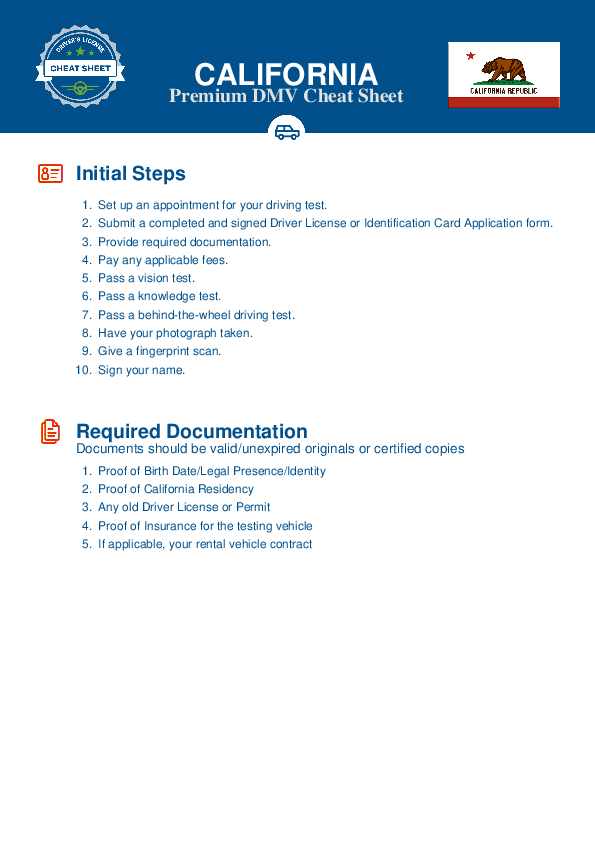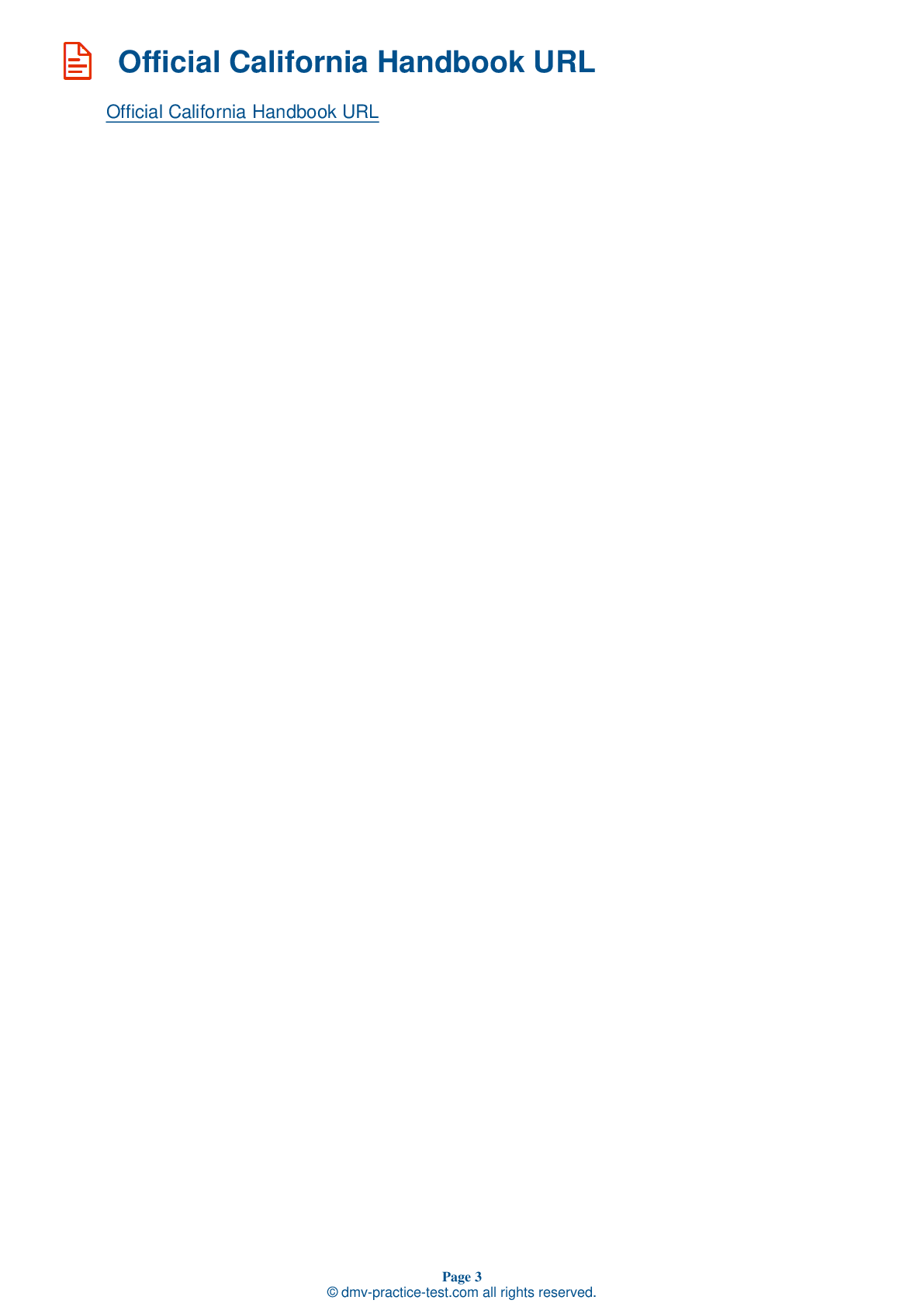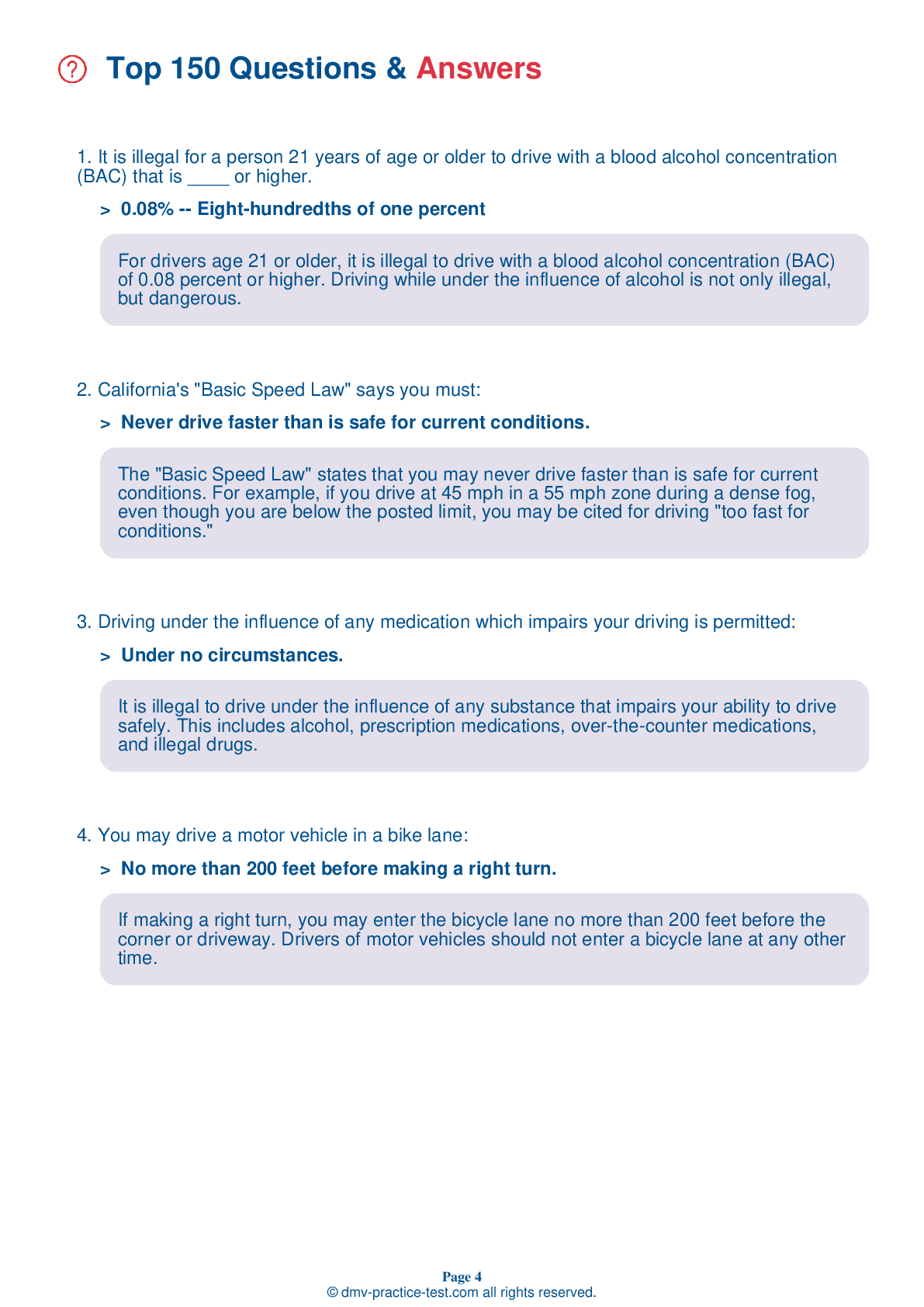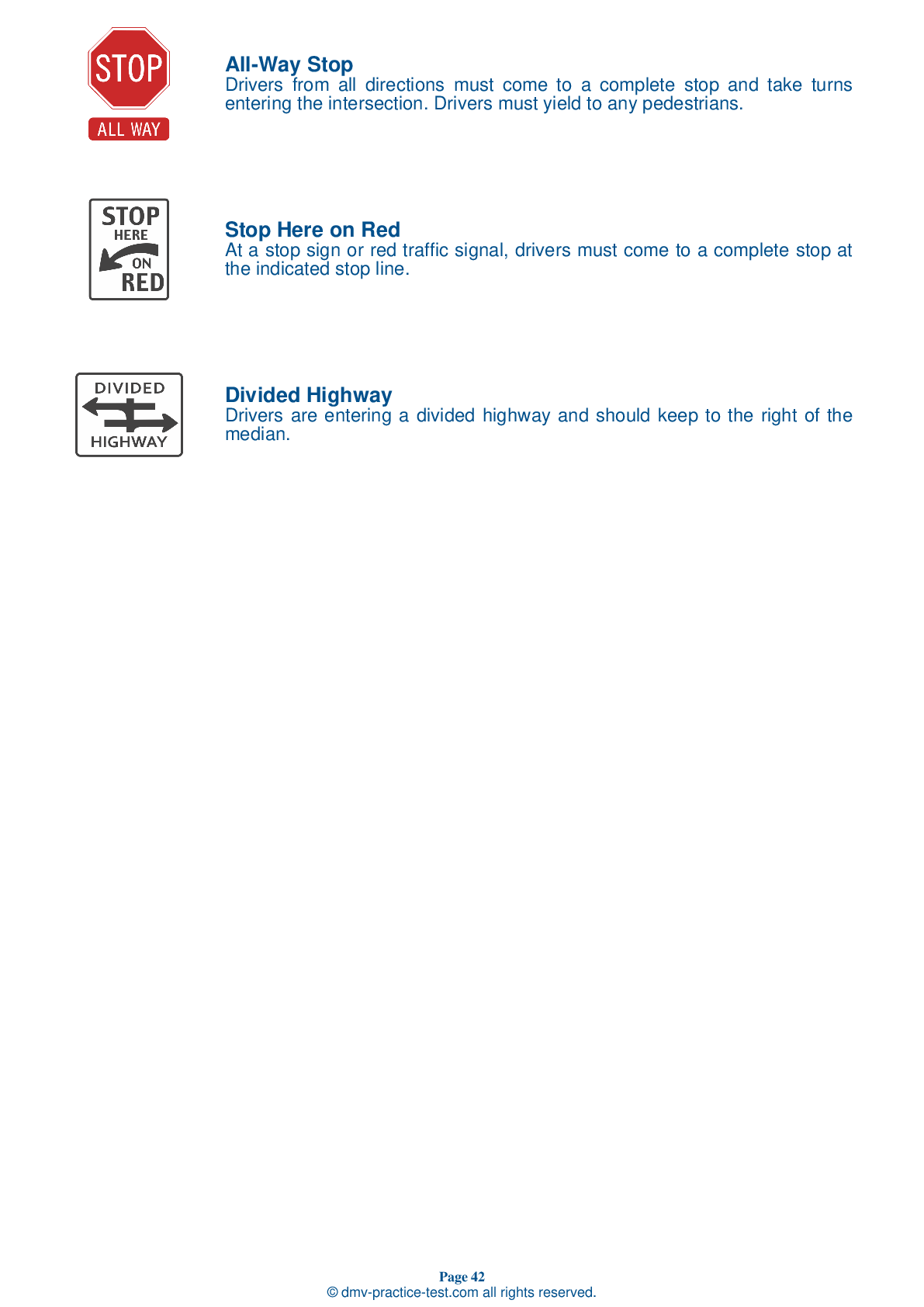FREE California DMV Practice Test #23 Page 5 of 6
This California DMV practice test includes 36 of the most vital road signs and rules questions taken directly from the official California Driver Handbook for 2025. Use genuine questions that are very similar (often identical!) to the DMV driving permit practice test and driver's license exam to prepare for the DMV driving permit test and driver's license exam.
To help you recall the topics, each ca dmv practice test question includes a hint and explanation. The written component of the official DMV test will consist of questions about regulations of the road, traffic signs, and driving statutes, as well as information from the Driver Handbook.
To get the required 83 percent passing score to be allowed to pass, you must correctly answer 38 out of 46 questions (or 30 out of 36 if you are over 18). Use this DMV practice exam to help you prepare for your California instruction permit or driver's license.
How does it work?
California residents using any form of testing help during the test will result in an automatic failure, and the DMV may take further action against your driving permit, so please don't cheat.
Ideally suited for:
- California Driver’s License
- Driver's Learner Permit in California
- CA Refresher Test for Senior Citizens CA
- CA Driver’s License Renewal
What to expect on the CA DMV exam:
- 36 questions
- To pass, you must have 30 accurate answers.
- a passing grade of 83%
- The minimum age to apply;15 ½
25 . Blocking an intersection during "rush hour" traffic is not permitted:
Even if your light is green, you should not enter an intersection unless you can get completely across before the light turns red. You can be cited if you block the intersection.
26 . Pedestrians crossing at corners have the right-of-way:
Respect the right-of-way of pedestrians. Always stop for any pedestrian crossing at a corner or crosswalk, even if the corner is without traffic signal lights. You should stop for pedestrians crossing at any crosswalk, whether or not the crosswalk is marked by painted lines.
27 . On rainy, snowy, or foggy days, turn on your windshield wipers and use your headlights:
Turn on your headlights when it is cloudy, raining, snowing, or foggy. If weather conditions require you to use your windshield wipers, you are required to turn on your low beam headlights.
28 . This sign means:

This sign informs drivers that they are leaving a divided roadway and approaching a two-way highway.
29 . If you want to pass a bicyclists riding on the right edge of your lane:
When passing a bicyclist, you must allow at least three feet of space between your vehicle and the bicycle whenever possible. You must not squeeze the bicyclist off the road.
30 . You should not make sudden stops in front of large trucks and buses because:
Large vehicles require longer distances to stop and accelerate than smaller vehicles do. Making a sudden stop in front of a large vehicle is dangerous because the other driver may not be able to stop in time to avoid a collision.
Need Car Insurance? No problem!
Compare the best rates in California and find a personalized policy that meets your needs.
1. Are You Currently insured ?
2. Married ?
3. Do you own your Home?
4. Do you have more than 1 car ?
5. Have you or a Family Member Honorably Served in U.S. Military ?
6. Your Name
7. Age
8. Zip code
IMPORTANT REMINDER:Auto Insurance is Mandatory to drive in California. Get covered before you hit the road to avoid any fines.
Ranked by best match



